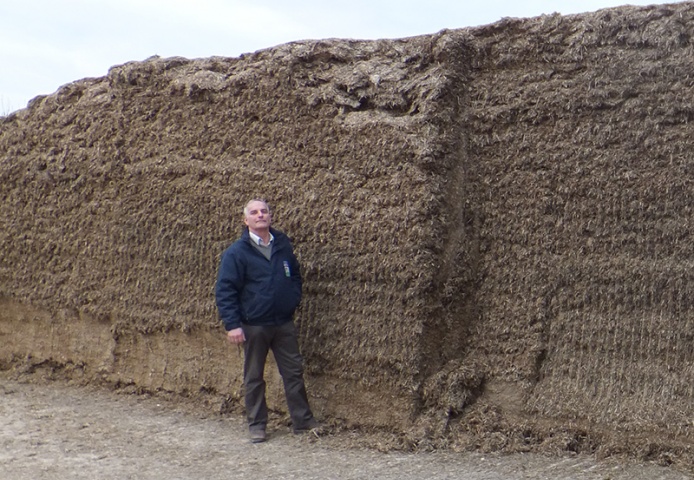SilaPactor proves its worth
David Ball is farm manager and director of Kemble Farms Ltd, Cirencester, who farm 1500 hectares. The family-owned business farms in association with the Royal Agricultural College Cirencester, and a substantial hectarage is farmed under arable crop contracts.
Other enterprises include the 750-cow dairy herd which is milked through a 36 point rapid exit parlour, the dairy followers, a livery yard and one of the UK’s first Bio-gas plants.
The dairy herd is housed for the majority of the year in a purpose-built dairy complex, where grass and maize silage form the base of the cows’ rations. 7000 tonnes of maize and a total of 3500 tonnes of grass and lucerne were ensiled during the 2012 season.
The Kemble Farms dairy team won the Gloucestershire National Milk Records Herd Competition Challenge Cup for the highest herd yield average in 2011 and have now won the highest-yielding individual cow and highest-yielding individual heifer cups in 2012.
David was generally happy with the 2012 silage harvest, taking opportunities, when the weather allowed, to cut and ensile as and when they could. The maize harvest was delayed due to bad weather and yields were reduced compared to previous years due to the poor growing season. A target DM of 30% for both maize and grass and 40% for lucerne was achieved.
Having seen the Kelvin Cave SilaPactor at its launch and in Press coverage, David thought that it was the right approach to improving silage compaction in a clamp. Tractor tyres are naturally designed to reduce compaction rather than increase it, and it was this that he wanted to overcome with the SilaPactor.
Following a discussion with Kelvin Cave, who provided additional information on the expected increase of tonnage stored in clamps due to the better compaction, David agreed that the thinking and practical application was sound, but was a little sceptical about Kelvin’s promised returns. However, he decided to buy a SilaPactor in time for the 2012 forage season.
SilaPactor Proved its Worth
The 4-tonne SilaPactor was operated on a Fendt 160h.p. tractor, and all promises made by Kelvin Cave regarding the SilaPactor’s performance were achieved. The 11 roller wheels are designed to compact and compress the crop in the clamp and can increase compaction density by up to 40% compared to conventional methods. The 3-metre rear-mounted roller can boost typical silage density up to 320kg/DM/m3 (depending on DM) compared to the average UK farm silage density of 180-220/kg/DM/m3. The effect of improved compaction was obvious at the clamp face, with minimal waste even on the shoulders of the clamp.
For the team at Kemble Farms the reduced need to move silage around the farm from outlying clamps is a real plus. More silage in the main clamps means less fuel and time transporting silage, and lower maintenance costs required for the clamps that are further away.
David measures silage density to calculate as accurately as possible the volumes of feed available for the herd. All the forage is fed through a computerised diet feeder, so all inputs, and outputs are accurately measured and recorded. Previously silage density averaged 0.7tonnes/m3 but this has increased to an average 0.92tonnes/m3 with the SilaPactor, a 30% increase!
